A senior Boeing executive has revealed that the company is planning ski-jump testing for its F/A-18 Super Hornet.
Boeing’s Vice President Thom Breckenridge was speaking to reporters at DefExpo 2020 where he revealed that discussions are underway with the Indian Navy regarding the trials.
“Testing plans are underway. We will rigorously check our aircraft on ski jump,” said Thom Breckenridge, Vice-President, International Sales at Boeing Defence, Space and Security, at the DefExpo 2020, which is being held in Lucknow.
Confirmation that the Super Hornet could operate with a relevant weapons loads from short-takeoff but arrested recovery carriers came following a meeting in New Delhi put on by Boeing in 2017, after which Indian defence page Livefist interviewed Dan Gillian, VP of the Super Hornet programme.
Short take-off but arrested recovery (used by India in this case) is a system used for the launch and recovery of aircraft from the deck of an aircraft carrier, combining short take-off without catapults and arrested recovery using cables on deck for the aircraft to catch.
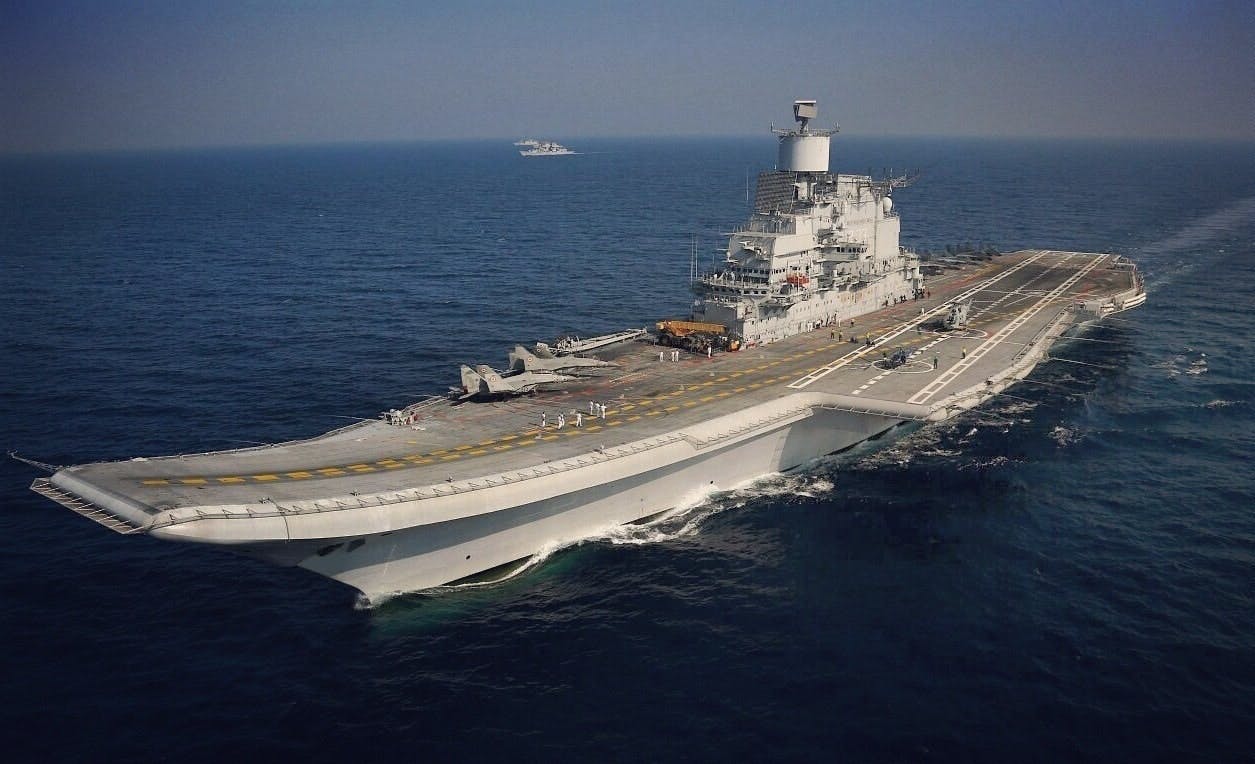
“We’ve done a lot of simulation work with the Indian Navy to better understand their requirements and we fill comfortable that the Super Hornet can operate from all their carriers, both the ones fielded today and the ones in the future… We think we can move around the deck, be very mission capable with a relevant weapons load-out and fuel load-out to give the Navy what they need. The Super Hornet as built today can operate from Indian carriers.”
You can read more from Tyler Rogoway on that here.


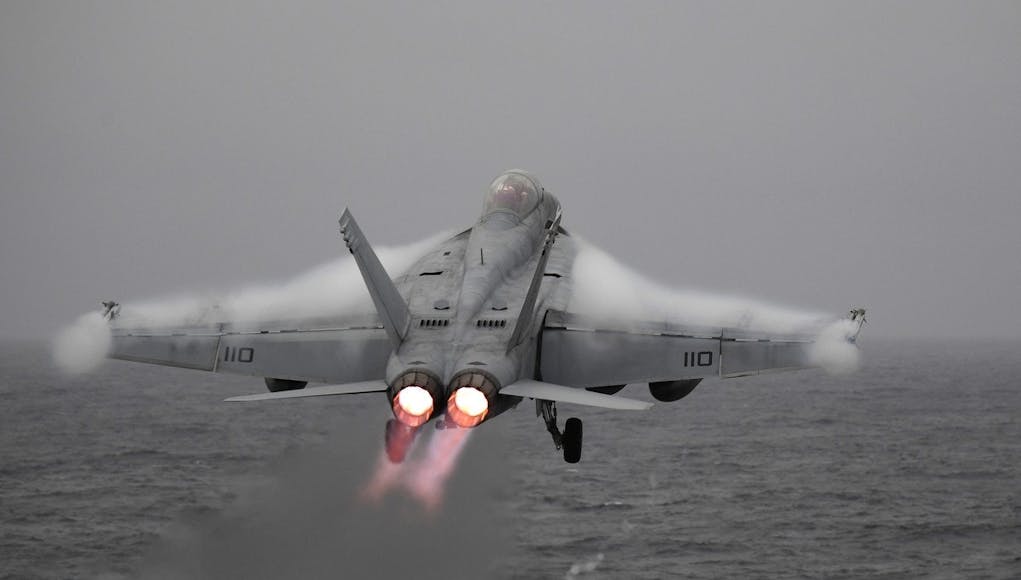

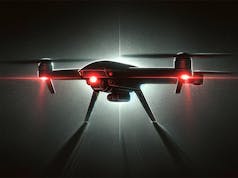


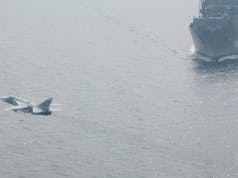
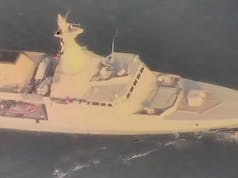
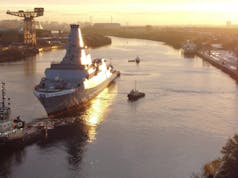
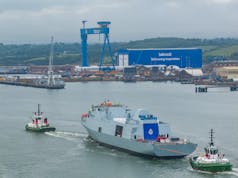
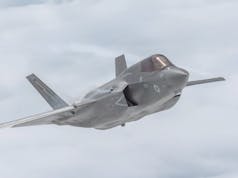


Start making our carries more flexible and we might just keep them.
Confirmation that the Super Hornet could operate with a relevant weapons loads from short-takeoff but arrested recovery carriers came following a meeting in New Delhi.
HMS Queen Elizabeth
Class and type: Queen Elizabeth-class aircraft carrier
Displacement: 65,000 tonnes (64,000 long tons; 72,000 short tons)[8]
Length: 284 m (932 ft)[9]
Beam: 39 m (128 ft) (waterline)
73 m (240 ft) overall
Draught: 11 m (36 ft)[10]
INS Vikramaditya
Class and type: Modified Kiev-class aircraft carrier
Displacement:
45,400 tons of loaded displacement[6][7]
Length: 283.5 metres (930 ft) (overall)
Beam: 59.8 metres (196 ft)[8]
Draught: 10.2 metres (33 ft)
I would make these tests a priority for the QE class, the USA and other nations might just buy some if it works out?
if the americans want a QE class they would put catapults on it – it was designed with that in mind so its not a big deal if done while being built
In addition to costs, I found this to be a real eye opener!
Britain considered fitting EMALS to its two new Queen Elizabeth-class aircraft carriers right back at the design stage. Indeed, the ability to add catapults and arrester gear to the ships was specified right from the start.
Lewis Page, late of this parish, summed up what happened when the government tried to exercise that option: “… it later got rescinded, on the grounds that putting catapults into the ships was not going to cost £900m – as the 2010 [Strategic Defence and Security Review] had estimated – but actually £2bn for [HMS] Prince of Wales and maybe £3bn for Queen Elizabeth.
This would double the projected price of the two ships.”
The Aircraft Carrier Alliance – heavily dominated by BAE Systems – had not designed the new carriers to have EMALS fitted at all, taking advantage of naïve MoD civil servants who didn’t get a price put into the contract for the conversion work. Bernard Gray, chief of defence materiel, told Parliament in 2013:
https://www.theregister.co.uk/2017/01/11/us_navy_emals_woes_uss_gerald_r_ford/
You need an angled deck for landing so jet can take off if it misses cables. This would require a lot more work than just adding some arrestor cables. Basically redesign/rebuild of the whole flight deck. May as well add CATOBAR if you are going to do so much work, that way you get the advantage of full fuel/weapons loads and Hawkeye E2D capability.
Would a full-width ski jump at the bow do the trick?
It will waste parking space, I think.
QE has a angled deck capability but this is not used in the current configuration.
I think QE is just fine with fifth generation F35s with Ski Jump. Also using cats n traps is slower then QE’s current system.
Catobar slower? FYI Catobar carriers have 2 or 3 cats so can launch aircraft at higher rate
All US CVN’s have 4 Cats. And thats great for launching 4 aircraft in very quick succession. But after the first 4 things slow down. The cat has to be reset, jet blast deflectors lowered, jet taxied carefully into position, attached, tensioned, JBD raised, checks completed, power up and launched.
All the while this is going on a STOVL is launching aircraft at a steady rate. Recovery on STOVL is even quicker.
If this proves successful, how big a job would it be to modify QE class carrier in a suitable configuration ?
Arrester equipment should be a lot less effort in a refit than a full CATOBAR set up.
This is a very interesting development; wouldn’t mind a mix of F/A-18Es and F-35Bs. Anyone know how well they would fit in the QE-class hangars ???
Any connection to the fact that the UK always seems to have pilots in the US training on F/A-18s ?
I’d tend to look towards Tempest. There’s Swedish input and Saab, with their short take off expertise, have already postulated a Sea Gripen version of the E, presumably to fulfil a similar niche.
Big, you need an angled deck so aircraft that don’t catch the wire can abort and go around and the ski jump need moving. Compartments below deck need modifcation for arrestor equipment.
expat – Queen Elizabeth’s have an angled deck, its just not painted up that way when using F-35B.
https://www.reddit.com/r/WarshipPorn/comments/bn9xra/proposed_design_of_modified_queen_elizabeth_class/
I totally agree that in the future the RN should if possible convert the carriers to STOBAR it would give a better flexibility to the airwing. However, this would mean an angled flight deck, and space to be found below deck for the arrestor gear. What needs to be fitted would be hydrolic ram rods to take up the slack, on the arrestor wires, rotary engines which are basically energy absorbing water turbines (twisters), and large induction motors for fine control. Plus power and water feeds. It might also mean a change to the deck landing equipment.
I did somewhere read about expeditionary systems that the US use for landings on short or temporary runways. They are more mechanical in setup and don’t need as much equipment, they are designed to be set up and stripped down in a few hours.
The QEs are big enough for the angled deck I just don’t know if there is enough space between flight deck and hanger area, but there should be, we managed to install cats and traps on older carriers when the kit was much more bulky and the carriers much smaller.
I wonder if the cost of installing the arrestor gear would be covered with the savings on aircraft, price ofset between F35B for F35C/Super Hornet/Saab Sea Gripen.
F-35C would Never take-off from a STOBAR carrier, maybe a Empty load, too heavy. Unless a swirl engine from a F-35B is fitted!
Thanks didn’t realise that.
Good Day Chaps.
Please help me with some high school physics. With the Ski Ramp one gains altitude but trades energy up the ramp so what is the net benefit? If The F35B was to take off from a flat deck then surely that would be at a faster terminal speed as it left the deck than when it left from a ramp and that additional speed would enable it to reach the additional altitude at about the same time? Is there a ‘sling shot’ effect?
History, geography and English were my subjects. Science was not a strong point…
Help please.
I think the main two benefits are actually nothing to do with physics.
1) Economics. Ski ramp is basically a piece of metal. It requires little maintenance, at least compared to a catapult. Ski ramp also reduces the required crew size vs a catapult. Costs less to build and less to run than a CATOBAR carrier.
2) It’s simpler so less to go wrong. On a CATOBAR carrier if the catapults broke down then that’s it; nothing is taking off, apart from helicopters.
The America and Wasp class ships operate F-35Bs without ski ramps.
Yes, they prefer to keep the extra deck space the ramp would take up, even though the ramp allows the aircraft to take off with more fuel/ordnance.
Hi Geoff,
You are right there is a trade off between speed and altitude as the plane leaves the deck. However, the plane is now climbing with full power applied. In effect the aircraft is on an ‘accelerating’ ballistic trajectory.
So if you think about the difference in range achieved when throwing a ball – throw it flat and is doesn’t go very far, throw upwards and it goes further… With the aircraft that additional time ‘airborne’ allows the it to accelerate to flight speed with a reasonable payload.
The key is, as always on any take-off, engine thrust to get the aircraft accelerating as quickly as possible, once off the deck getting the undercarriage retracted ASAP can generate rapid acceleration as drag is suddenly removed from the aircraft…
Ski jump take-off is in effect a combination of ballistic flight and aerodynamic flight, the quick you transition to full aerodynamic flight the sooner you have full flight control of the aircraft.
Hope all that helps.
Cheers CR
Hi Geoff,
The ramp is actually quite short, its not like trying to blast off up hill. The loss of airspeed might be as low as 1 or 2 knts, but it sets the aircrafts wings to the correct angle of attack, whilst unloading the wing as it exits the ramp. This wing unloading reduces the stall speed of the aircraft and so makes take-offs safer. I’ve obviously never flown the F35, but I imagine that there is the application of a little forward stick as the plane clears the ramp. This would extend the time that the wings remain unloaded, allowing the engine thrust to continue to accelerate the aircraft.
With a straight deck as you come off the end you would have to pull back on the stick to maintain level flight, this would increase the wing loading significantly and increase the stall speed significantly.
Its basically a very clever way of making sure that the aircraft doesn’t enter a high speed stall as it takes flight. The ramp angle and length is super important, just 1 or 2 degrees in either direction has a large effect.
Thanks CR and David-am still digesting but great to have expert opinions! BTW- I am geoff with the small’g’ to differentiate me from Geoff with the capital G above.
I’m the old guy from Durban
Cheers
ps just he says something outrageous
ps just in case he says …
pps and thanks Steve R
I never understand why we didn’t add arrestors, yes we would have need to relocate the ski jump and angled deck by if this had be done at the design phase we would have first reduced work to covert the carrier to catapults in the future and added some flexibility. Northrup believed it was possible for the E2 to operate from a STOBAR carrier for example.
If the UK adds traps to QE class, it would be more likely so that a wider range of uavs could be operated.
That’s a possibility, right now we could only operate a rotary wing UAV. Other possibility would be a UAV with a setup like the F35 or V22, so the engine can provide vertical lift and forward thrust. Another option would be a an airframe with loads of lift which has a very low stall speed. Perhaps this 🙂
https://www.youtube.com/watch?v=QFllgHbjnlU
Would it be feasible to recover a UAV such as the Predator type with something akin to a tennis net strung across its path or would the UAV break up due to fragility and landing speed?
A UAV could be launched using mini bolt-on bolt-off catapult from front starboard of the deck. The engine would need to be turn off as soon as touchdown so net can catch it.
What you are describing is in sense a crash barrier. These are used on military airfields currently as a last resort. There designed to stop an aircraft if it has a flame out when trying to take-off. The aircraft will be doing well over 100 knots probably with a full load of fuel and possibly weapons. So they are pretty tough bits of kit. They do have a habit of ripping off antennas and anything that’s not bolted down well. So the UAV would have to be designed with this in mind.
The Issue is launching a meaningful load, on the aircraft, into the Air!
Even using STOBAR, you can Only launch a limited load into the air without ‘vectored thrust’.
The Only alternative to CATOBAR, to launch a fully loaded aircraft, is rocket assist take-off using STOBAR configuration.
India tested the Tejas for take off and landing recently. It would be interesting to know about the weapons and fuel load capabilities for both planes on these ramp type carriers. I wonder if Rafale will also be tested on Indian carrier.
I think the Rafale will struggle to take-off with a meaningful load, with a TWR of .98, the F-35C is only .89 TWR, the MIG 29 is 1.04 TWR.
It is the thrust vectored swirl jet engine that makes a difference in the ability of the F-35b to take-off with meaningful load.
Chariot Rider, David Steve R.
Had a small Eureka moment pondering all your info whilst lying in the dark during Load Shedding(thanks to Eskom and Jacob Zuma)
So,leaving aside the abilities that STOVL gives us, the Ski Ramp enables an aircraft to reach a height and trajectory from a short run up long before it would achieve that in the normal manner i.e. by taking off from a long runway and attaining the necessary speed and hence lift, for a conventional take off-all with wings set at correct angle of attack. On a flat short deck, again leaving aside the abilities of STOVL, the aircraft is nowhere near the required speed to give the necessary lift so as it’leaps off the end of the deck’ it has to make a serious correction to maintain level flight i.e if this is not done then it is heading down to the drink!
Have i learned some science?!
Boeing… given their recent failures with the 737 Max, USAF KC-46, and the Starliner capsule, this looks like a ‘hail Mary’ play to try and win an order from the Indian Navy given their balance sheet is pretty terrifying at the moment.
Traps:
Arrestors for the QE’s would make sense to allow UAV beyond rotary wing types.
Cats:
But if we were to convert them to cat and traps;
(a) then we might as well buy the F35Cs and we’ve wasted a huge amount of time and money on our current F35B’s which without a ski jump would be unusable
(b) you’re looking at each carrier being out of action for at least a year for the changes, assuming spare yard capacity can be found to do the work
(c) possibly increased power requirements for the EMALS – assuming we can get it working, the USN certainly struggled to
(d) the cost of all this would probably result in the T26 programme being slashed from 8 to 4 – or something equally horrifying – to pay for it.
So, it ain’t going to happen.
I wouldn’t worry about Boeing’s balance sheet. They are “too big to fail”, just like Airbus.